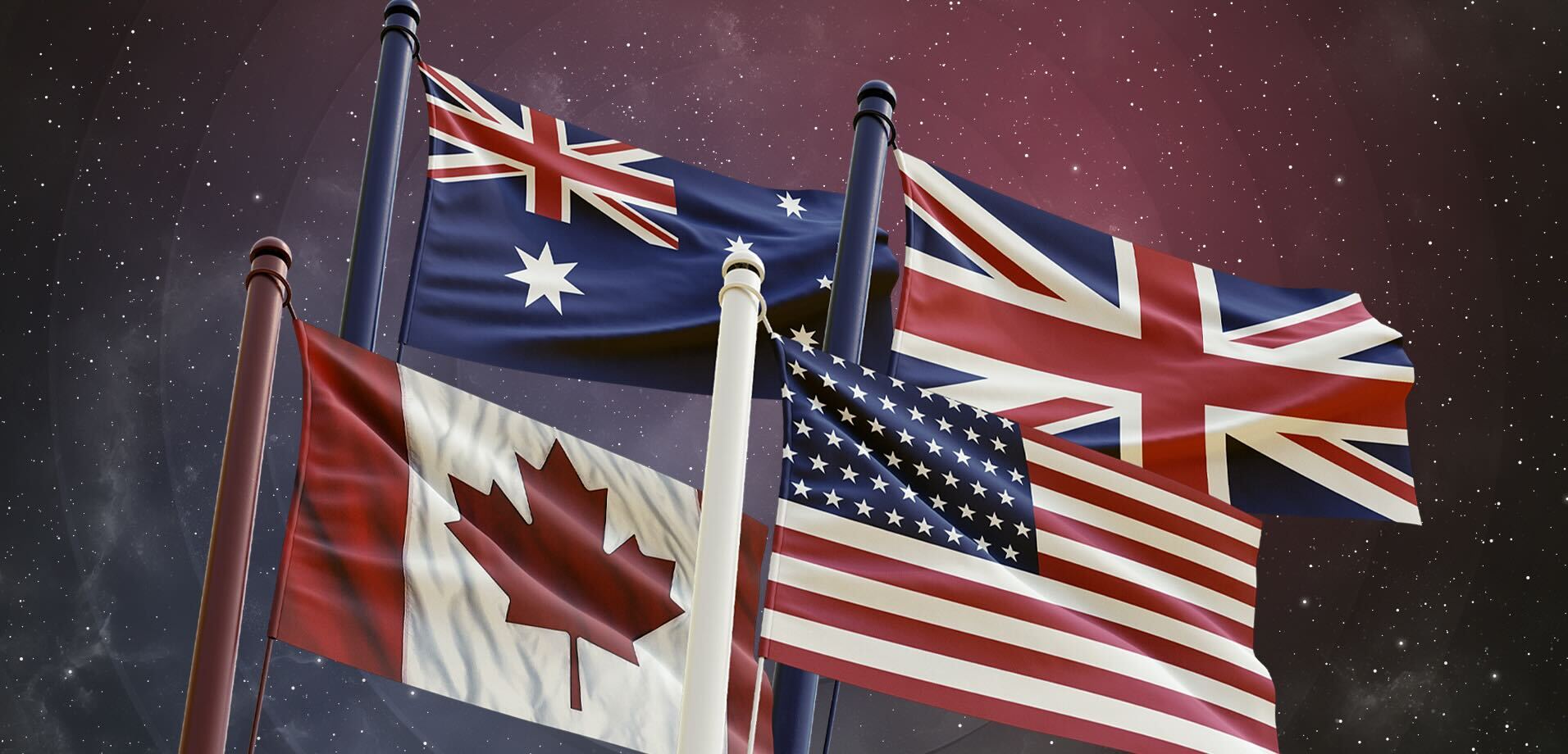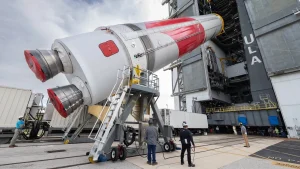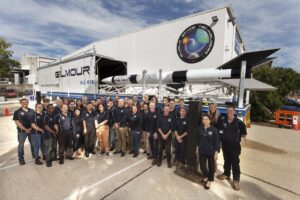UK Space Agency Int’l Bilateral Fund Phase 2 Awardees Announced
10th Apr 2024
The UK Space Agency has chosen 11 projects to move forward into Phase 2 of its International Bilateral Fund. Phase 1 had been completed around year-end 2023, and a review and prioritisation process took place over the winter. UK Space Agency announced the winners at the 39th Space Symposium in Colorado Springs, USA, on 8th April. The awards foster direct international partnerships between British endeavours and foreign partners.
Dr Paul Bate, Chief Executive of the UK Space Agency, said:
“We want to draw on the best global talent to push the boundaries of new technology such as AI and space nuclear power, enhance our homegrown space capabilities and catalyse investment into the UK economy. “The projects supported by our International Bilateral Fund champion the best of British innovation, while strengthening our ties with the wider space community. Together we can break new ground, further our understanding of the Universe and use the vast power of space to protect and benefit lives on Earth.”
UK-Australia Space Bridge
The international flavour of the bilateral fund could also be found in the funding, with AUS$3 million coming from the Australian Space Agency. This co-funding will go to support Aquawatch AUK, run by Surrey Satellite Technology, Ltd, on the British side. UK Space Agency writes that the project’s scope is “to develop a world class integrated water quality monitoring and forecasting system for use across the UK, Australia and beyond.”
Bilateral fund Phase 2 projects, according to UK Space Agency(with approx. Phase 2 grant allocation figures only)
- Rolls-Royce Submarines Limited (UK) and partners BWXT Advanced Technologies LLC (USA) – £1,200,000 Project to identify the optimum technologies for a fission nuclear system which balances flexibility to a range of space power missions and maximises performance whilst minimising programme and technical risk.
- University of Leicester (UK) and partners from the UK, USA, and Japan – £800,000 Project to identify a range of mission opportunities for UK space nuclear power technologies. The collaboration also includes the development of hybrid power systems with existing US conversion technologies.
- Vertical Future Ltd (UK) and partners University of Cambridge (UK), University of Adelaide (Australia), University of Western Australia (Australia)(UWA), University of Southern Queensland (Australia), Axiom Space (USA), Saber Astronautics (USA/ Australia), South Australian Space Industry Centre (Australia) – £1,500,000 Development of a state-of-the-art, autonomous, controlled environmental agriculture facility for optimal plant growth in space to support both missions and experimentation. It will adapt learnings from current and future experiments on the International Space Station to ensure feasibility.
- XCAM Ltd (UK) and partners The Open University (UK), University College London (UK), Teledyne UK Ltd (UK) and the Indian Space Research Organisation (India) – £500,000 Development of a new X-ray imaging instrument, AXIS, targeted at studying the X-ray emission from Earth’s aurorae. The project arises from the European Space Agency’s Theseus programme and represent the first demonstration of this new technology in a space mission.
- Surrey Satellite Technologies Ltd (UK) and partners Assimila (UK), RAL Space (UK), Pixalytics (UK), Centre for Environment, Fisheries and Aquaculture Science (UK), Commonwealth Scientific and Industrial Research Organisation (Australia), SmartSat CRC (Australia), Airbus in Asia Pacific (Australia) – £1,000,000 Developing a system of actionable information on inland and coastal water quality. It will bring together space and water experts to develop an innovative approach to assess and predict water quality and its impacts on ecosystems while providing a pathway to a strategic sharing of a satellite solution between the UK and Australia.
- In-Space Missions Ltd (UK) and partners Taiwan Space Agency (Taiwan), National Tsing Hua University (Taiwan), Philippine Space Agency (Philippines), The Geo-Informatics and Space Technology Development Agency (Thailand), Office for Space Technology and Industry (Singapore), A*STAR Research Entities, Institute for Infocomm Research (Singapore), Oxford Space Systems (UK), National University of Singapore (Singapore), Addvalue (Singapore), Vietnam National Space Centre (Vietnam) – £1,500,000 The Faraday Dragon Rideshare Mission – a multi-agency collaboration to accelerate space technology and business via payload development. It brings together emerging space-based organisations from Singapore, Taiwan, Philippines, Thailand, and Vietnam and the UK.
- Iota Technology Ltd (UK) and partners STFC RAL Space (UK), Oxford Space Systems Ltd (UK) and Twinleaf LLC (USA), -£1,500,000 High-accuracy nanosatellite magnetometry which will form the primary payload of the Io-1 CubeSat. It will raise the atomic magnetometer, fluxgate magnetometer and deployable boom’s technical readiness level and capture data in support of the World Magnetic Model.
- University of Strathclyde (UK) and partners University of Arizona (USA), Massachusetts Institute of Technology (USA), University of Waterloo (Canada), Columbiad Launch Services (Canada), GMV UK, LIFT ME OFF Ltd, The Alan Turing Institute (ATI), Nominal Systems (Australia) – £1,500,000 Escalating the technology readiness of AI technology applied to space safety and sustainability, from concept to adoption by the space sector. It will lay the foundations for an international virtual institute supporting the future development of AI technology for space sustainability.
- University of Southampton (UK) and partners University of Michigan (USA), Airbus Defence and Space UK), Pulsar Fusion UK and Starlight Engines (USA) – £1,000,000 Development of the capabilities of Hall thruster research and commercial development in the UK. The project will improve the UK’s capabilities in an absolutely intrinsic field of spacecraft technology.
- The Open University (UK) and partners Lunar and Planetary Laboratory, University of Arizona (USA), Ball Aerospace and Technologies (USA), XCAM Ltd (UK) and Teledyne e2v (UK) – £1,300,000 The development of the next generation of ultra-high resolution imaging instruments, the Teledyne e2v CIS 125 detector. It will support US space agency Moon and Mars science and exploration objectives.
- University of Leicester (UK) and partners Geospatial Insight Ltd (UK), Bahrain National Space Science Agency (Bahrain), Industry and Energy Division, YBA Kanoo Group (Bahrain) – £1,400,000 Development of a new capability to enable monitoring of greenhouse gas emissions in the Gulf region from a small spacecraft. The project, with funding from the International Bilateral Fund will evolve the state of the art in sensing for compact and targeted deployments.






Thank you for your comment! It will be visible on the site after moderation.